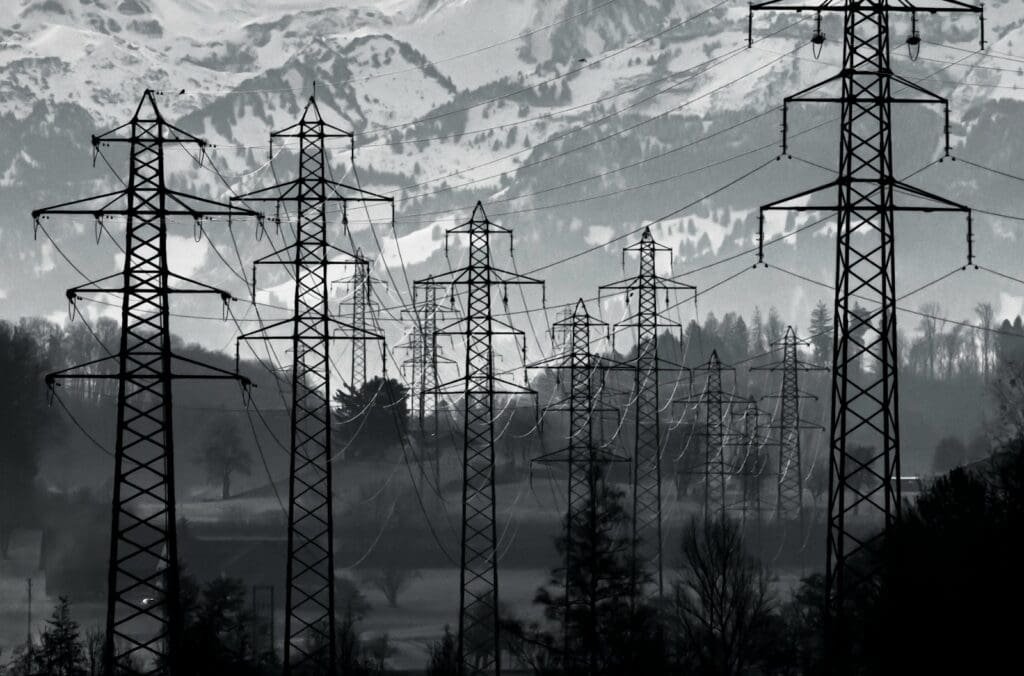Introduction
Ever wondered about those subtle flickers in your lights or the sudden system shutdowns of your electronic devices? These interruptions could be related to ‘Lightning’ and ‘Switching’ surges in your electrical system.
In this blog post, we will dive deep into understanding these phenomena. We will break down lightning and switching surges, understand how they originate, and examine their potential impacts. We’ll explore preventive measures against them and discuss the key role of the Switching Surge Factor in managing these surges.
So without further ado, let’s equip ourselves with some surge protection know-how.
Table of Contents
Defining Lightning and Switching Surges

Before choosing to dissect the concept of lightning and switching surges, it’s important to break it down into two separate parts for clarity. Firstly, let’s begin with defining lightning surges.
Lightning Surges
Lightning surge, in layman terms, is a transient voltage spike caused by lightning strikes on or near electric power systems.
How are Lightning Surges Caused?
The causes behind lightning surges can be quite complex, but we can simplify it to two main scenarios:
- The direct effect of a lightning strike on power lines – a large current flows suddenly, which can trigger a voltage surge.
- The indirect effect of lightning – the power line picks up induces voltage from the electromagnetic field created by a nearby lightning strike.
Lightning Surge and Equipment Damage
Lightning surges can harm electronic equipment significantly. When the lightning-caused voltage increases abruptly, electronic devices connected to the power system can get damaged due to overheating or over-stressing of the internal components.
Switching Surges
On the other hand, switching surges are transient voltage variations within electricity systems. They’re typically shorter and less severe than lightning surges, but they occur more frequently during the daily operations of an electrical grid.
Origins of Switching Surges
Switching surges are most often created by two types of events:
- Switching on or off large loads – when high power electrical devices (like large motors or transformers) are turned on/off, the change in power can produce a surge.
- Faults and short-circuits – if there’s an unexpected short-circuit or fault somewhere in the electrical grid, the result can be a switching surge when the fault is cleared.
Switching Surge Impacts on Infrastructure
Switching surges can also be detrimental to electrical infrastructure. Repeated exposure to these surges can wear down the insulation on electrical cables, eventually resulting in faults and breakdowns.
A Brief Comparison of Both Surges
While both surges can potentially harm the equipment, they differ in their origins and the extent of the damage they can cause.
| Type of Surge | Causes | Potential Damages |
|---|---|---|
| Lightning Surge | Caused by lightning strikes on or nearby power systems | Can result in significant damages, especially on sensitive electronics |
| Switching Surge | Occurs from turning on/off high power devices and clearing of faults in the electrical system | Causes gradual wear and tear but can lead to serious damages over time |
Details on Lightning Surge Impact

Effects on Power Lines and Distribution Systems
Lightning surges pose a severe threat to electrical infrastructure. They can cause immediate, catastrophic damage to power distribution systems. Protection devices installed in the power systems, designed to cope with overvoltage situations, sometimes fail to confront lightning surges due to their high energy level and instant occurrence.
Role of Surge Arresters in Lightning Surges
To minimize lightning surge damage, professionals install surge arresters on the power distribution system. These devices behave as over-voltage protectors. They shunt the extra power from the surge to the earth, shielding the connected equipment from harmful surges. Surge arresters act as a “pressure relief valve” for your electrical system.
The Negative Impact on Communication Lines
Lightning surges are not confined to power lines alone. They can also impose severe threats to communication lines. Telephone lines, cable lines, and even wireless communications can be disrupted due to the electromagnetic field created by a lightning strike.
Additional Insights on Switching Surges
The Resulting Voltage Instability
Switching surges can introduce momentary instabilities in power systems’ voltage. When high power devices are turned on/off or during a fault-clearing process, the variation in the currents and voltages disrupts a system’s stability, which may cause flickering lights or brief power outages.
Long-Term Implications of Switching Surges
While each individual switching surge might have a minor impact, their cumulative effect can be significant. Persistent occurrences of switching surges can lead not only to insulation degradation but also malfunctions of the connected electrical devices. Over time, the consistent over-stressing can degrade the performance of these devices, and they may fail prematurely.
Role of Surge Suppressors in Switching Surges
Like surge arresters in the case of lightning surges, surge suppressors are used to cope with switching surges. They absorb the excess voltage and direct it to the ground, helping to significantly reduce the impact of switching surges on the connected equipment.
Prevention Measures for Both Types of Surges
Employing Surge Protection Devices
Deploying surge protection devices throughout your electrical system is essential to protect against both lightning and switching surges. As we have discussed, these devices divert the excess power caused by a surge safely to the ground, protecting your equipment and minimizing the need for costly repairs or replacements.
Proper Grounding System
Another way to protect your system from the damages of surges is by maintaining a proper grounding system. A well-designed grounding system provides a path for surges to flow into the earth, minimizing their potential to damage your infrastructure or devices.
Insulation Coordination
Correctly coordinating insulation levels is vital to strike a balance between risk and cost. An insulation coordination study can determine the optimal insulation level for different equipment, minimizing the chances of failure during a surge.
Understanding the Switching Surge Factor
In the discussion about switching surges, one key aspect that commands attention is the switching surge factor. To put it simply, the switching surge factor is a measure that estimates the potential stress that a switching surge could put on an electrical system compared to its designated voltage level.
Why is the Switching Surge Factor Important?
Look at the switching surge factor as a readiness check for your electricity system against switching surges. The larger the switching surge factor, the higher the relative voltage the system can withstand, decreasing its susceptibility to damages caused by switching surges.
The Calculation of the Switching Surge Factor
The switching surge factor (SSF) is calculated as the ratio of the switching surge withstand voltage (SSWV) to the rated voltage (RV) of the system. The calculation is presented as follows:
SSF = SSWV / RV
Where:
– SSWV is the highest voltage that the system can handle during a switching surge without getting damaged.
– RV is the system’s normal operating voltage level.
The switching surge factor gives us an objective, quantifiable measure of how ‘switching surge resilient’ an element of the electrical system is.
How to Interpret the Switching Surge Factor
When you have calculated the switching surge factor for a given system, it provides a scale to gauge the level of protection against switching surges. If, for example, a system has an SSF of 1.2, it means the system can withstand switching surges up to 20% over its normal operation voltage.\
The higher the factor, the more resilient the system is against the potential harm from switching surges. However, having an excessively high SSF may indicate overdesign, which can be economically disadvantageous. Hence, an optimal SSF providing adequate protection without unnecessary cost is the goal.
Role of the Switching Surge Factor in Insulation Coordination
In the context of insulation coordination, the switching surge factor plays a key role in determining the insulation strength of various equipment in an electrical system. Since switching surges are among the key stressors on insulation, knowing a system’s SSF can help in selecting appropriate insulation levels.
Addressing Switching Surge Factor in Surge Protection Strategy

Surge Protection and the Switching Surge Factor
Considering the switching surge factor helps guide effective surge protection strategy. By identifying components of the system with a low SSF, you can prioritize where to install surge protection devices for a more efficient protection scheme.
The Selection of Surge Protection Devices
Taking into account the switching surge factor also influences the selection of surge protection devices. Devices with a higher clamping voltage than the calculated SSWV (Switching Surge Withstand Voltage) should not be used.
Switching Surge Factor and Grounding System
The resilience of a grounding system to switching surges can also be represented by a switching surge factor. A well-grounded system with a high SSF would provide a more effective path for surges to flow to the earth, further mitigating risks associated with switching surges.
Cross-checking Switching Surge Factor with Actual Field Conditions
While the switching surge factor provides a good starting point for diagnosing susceptibility to switching surges, it doesn’t account for all real-world scenarios. So, thorough field testing and monitoring is necessary to validate the theoretical SSF with the real performance of the system under actual surge conditions.
Switching Surge Factor in Infrastructure Design
Influence on Electrical System Design
In the lay down of an electrical system, the switching surge factor plays a significant role. It can determine the durability and resiliency of the entire system, influencing the selection and placement of surge protection devices, grounding architecture, and insulation level. Hence, power system engineers keep the SSF in mind while designing and upgrading electric power distributing systems.
Designing According to the Switching Surge Factor
To provide robust protection against switching surges, the SSF needs to be considered during the design stage. Higher SSF values may prompt designers to augment system insulation, install additional surge protection devices, or enhance the grounding system to prevent potential damages.
Switching Surge Factor and System Maintenance
Switching surge factor is not only used during the system design, but it also provides valuable insight into the maintenance needs and longevity expectancy of the system. For example, a system with a lower SSF may require more frequent checks and maintenance to prevent failure due to frequent switching surges. Similarly, a higher SSF can suggest a high-tolerance system that may require less regular maintenance intervals, potentially saving operational costs.
Factors Influencing the Switching Surge Factor
Operational Parameters Influencing the SSF
The Switching Surge Factor is subject to the influence of various operational parameters. Some of the key factors that could affect the SSF include:
- System Voltage: The rated voltage of a system is a key determinant of the SSWV, hence influencing the SSF.
- Load characteristics: The characteristics and magnitude of the load that the system is catering to, may also impact the SSF.
- Switching devices: The kind and characteristics of switching devices can affect the magnitude and frequency of switching surges, thereby impacting the SSF.
- System topology: The configuration and layout of the system can affect the propagation and extent of the surges, hence influencing the SSF.
Environmental Factors Affecting the Switching Surge Factor
Certain often-overlooked environmental factors can also affect the switching surge factor, such as:
- Temperature: Temperature extremes can alter the performance of protective devices and system components, potentially affecting the SSF.
- Humidity: Moisture content in the air can alter insulation properties, impacting the SSWV and, consequently, the SSF.
- Elevation: The height above sea level can modify air’s dielectric strength, impacting insulation properties and the SSF calculation.
Adapting the Switching Surge Factor Over Time
Need for Regular Re-evaluation
The Switching Surge Factor isn’t a constant value. Over time, with changes in system operations and environment, the SSF will likely vary. Thus, over time, re-evaluation becomes necessary to keep the protection strategy up-to-date.
Updating the Switching Surge Factor
Accurate up-to-date information about the system and its operational environment should be used to recalculate the SSF periodically. These updates can also prompt changes in the insulation, grounding, and surge protection strategies, if necessary.
Influence of Technological Advancements
Advancements in technology and innovation form another parameter that influences the re-calculation needs for the SSF. With improvements in switching technology, surge protection techniques, or even system monitoring tools, the SSF may need re-adjustments to account for these changes.
The Impact of Technological Progress on SSF Calculation
As technological innovation influences all aspects of electrical systems, from the devices being used to the protective mechanisms, any change in technology has potential effects on the SSF. For example, newer technology could provide switching devices that reduce the occurrence or magnitude of switching surges, decreasing the SSF and thereby reducing potential damage.
The Switching Surge Factor plays a critical role in defining the overall health and robustness of an electrical system. It provides a roadmap for designing, deploying, and maintaining an efficient and robust system less prone to damage due to switching surges.
Regular re-evaluation and adjustments according to the latest technology and operational variations ensure its continued effectiveness in optimal system protection against switching surges.
Wrapping Up Surges and their Impact
Understanding the intricacies of both lightning and switching surges is indeed crucial for the efficient operation and longevity of an electrical system.
It’s evident the Switching Surge Factor stands as a paramount metric in this context. It’s a practical guide in designing the system and creating effective strategies against potential surge damages.
With the help of this tool, we can determine where to focus our attention when providing protective measures and maintaining our system.
Most importantly, updating the SSF based on system changes and wearing and technological advances helps to ensure its continued reliability and safety.
What is the difference between lightning and switching surges?
Lightning surges are caused by natural lightning strikes on or near the power system while switching surges are due to operational changes within the power system, such as switching on/off large loads or clearing faults.
Why is the Switching Surge Factor important?
The Switching Surge Factor is an indicator of how resilient the system is to potential switching surge induced damage. It assists in vital decision-making concerning system protection strategy and maintenance.
What can influence the Switching Surge Factor?
The SSF can be influenced by several operational parameters such as system voltage, load characteristics, switching devices, and system topology, as well as environmental factors like temperature, humidity, and elevation. Technological advancements could also necessitate updates to the SSF.
How should the SSF be updated over time?
SSF should be recalculated periodically using up-to-date information about system operations and environment. Technological advancements and changes in system configurations should also be considered when updating the SSF.






